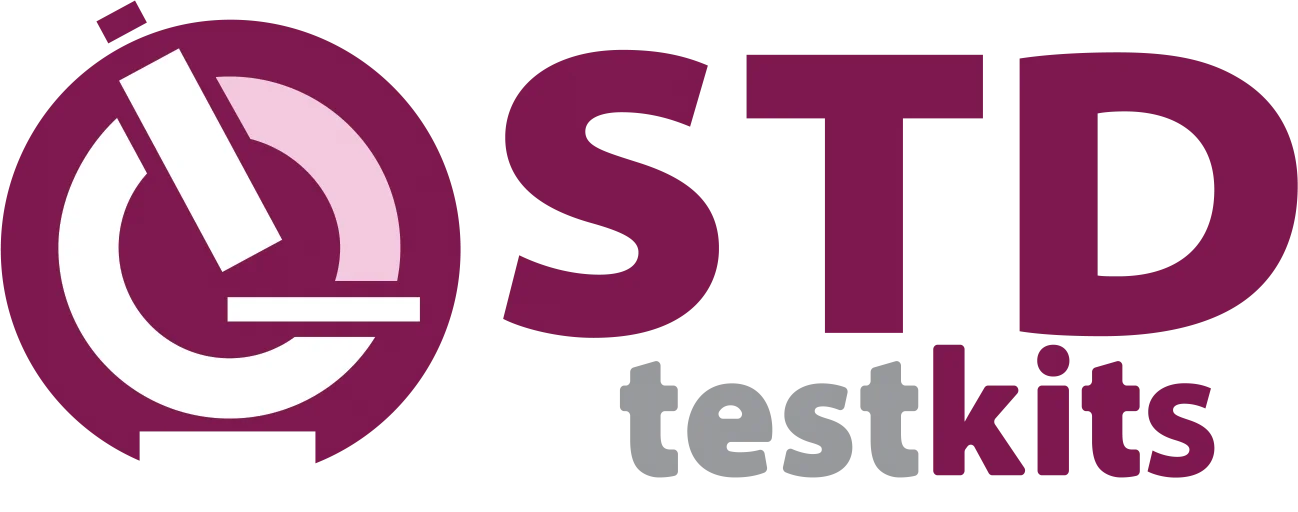Are Gay Men Responsible for HIV?
The human immunodeficiency virus, or HIV, still remains a global issue that infects millions of people worldwide regardless of gender, sexual orientation, or racial background. Even with properly educated public health awareness and prevention, there are still ongoing harmful stereotypes and myths about the disease in relation to members of the LGBTQ+ community, particularly gay and bisexual men. While these groups bear a disproportionate share of HIV cases, it's important to understand that this should not be about "responsibility" but rather about a complex interplay of biological, social, and behavioral factors.
We will explain the valid reasons for the higher prevalence of HIV in the LGBTQ+ community, debunk harmful myths, and discuss solutions that truly work toward reducing transmission, stigma, and discrimination. Central to these solutions is access to, and ease of, rapid at-home HIV testing, which allows individuals to monitor their status regularly and take immediate action based on the results.
Understanding HIV and Its Transmission
The virus, HIV, essentially attacks the body's immune system by targeting the CD4 cells, also known as T cells, which are necessary for fighting off infections and diseases. If left untreated, HIV leads to acquired immunodeficiency syndrome (AIDS). HIV is transmitted through body fluids such as blood, semen, vaginal fluids, rectal fluids, and breast milk, making sexual contact, needle sharing, and childbirth common transmission routes.
While HIV can affect anyone, gay and bisexual men make up a large portion of new diagnoses. According to the Centers for Disease Control and Prevention, these groups account for approximately two-thirds of new HIV diagnoses in the United States.
HIV Prevalence in the LGBTQ+ Community: The Numbers
The higher prevalence of HIV among gay and bisexual men is not a result of irresponsibility or identity issues, but rather due to several key factors:
- Higher Prevalence of HIV in Social Networks
In communities where the virus is more prevalent, it becomes easier for it to spread. Individuals in these networks are more likely to contract HIV in settings where healthcare or prevention measures may be less accessible or incomplete. - Biological Factors
Research shows that anal sex carries a higher risk of HIV transmission compared to vaginal intercourse. The rectal lining is thinner and more fragile, making it easier for the virus to enter the body during unprotected anal sex. - Late Diagnosis of HIV
Many people, particularly those from underserved backgrounds, are often diagnosed with HIV during the later stages of the disease. By the time they discover their status, they may have already unknowingly transmitted the virus to others. - Stigma and Discrimination
Stigma and discrimination are some of the largest barriers to prevention and treatment. Fear of judgment and discrimination keeps many individuals from getting tested, treated, or cared for, which further contributes to the spread of the virus.
Isn't HIV a Gay Disease?
One of the most damaging myths surrounding HIV is the misconception that it is a "gay disease." This harmful narrative unjustly blames gay men for spreading the virus and only serves to stigmatize an already vulnerable population. In reality, HIV can affect anyone, and its transmission is influenced by numerous factors, including healthcare access, education, and social systems.
The history of HIV in the LGBTQ+ community is deeply connected to stigma, fear, and discrimination. When the HIV/AIDS epidemic began in the 1980s, gay men were among the first groups to be seriously affected by the disease, which fueled harmful stereotypes. However, public health experts have emphasized that the disproportionate burden of HIV in this population is due to systemic barriers to prevention and care, not anything related to identity or behavior.
The Importance of Rapid At-Home Testing for HIV
Rapid at-home HIV testing kits have become a crucial tool in reducing HIV transmission and ensuring early diagnosis. These kits provide a convenient, easy-to-use method for individuals to test themselves for HIV from the comfort and privacy of their own homes.
One such product is the Remedium Instant Rapid HIV Test Kit, which can be ordered online. The test involves taking a small blood sample, usually through a finger prick, to detect antibodies for HIV. The results are available quickly, allowing individuals to take immediate action based on their status.
How the Remedium Instant Rapid HIV Test Kit Works
The test requires applying a blood sample to a device that detects the presence of antibodies against HIV. If the result is positive, it is important to seek confirmation from a healthcare professional and begin treatment if necessary.
Benefits of Regular At-Home Testing
There are several advantages to incorporating at-home HIV testing into a regular routine:
-
Privacy and Convenience: Many people avoid testing at clinics due to stigma or concerns about confidentiality. At-home tests allow individuals to test themselves in the privacy of their own homes without interacting with healthcare providers.
-
Early Detection: Regular testing helps catch HIV early, which significantly improves treatment outcomes. Early diagnosis allows individuals to start antiretroviral therapy (ART), which helps maintain a healthy immune system and reduces the viral load, making it less likely to transmit the virus to others.
-
Instant Results: The Remedium test provides results within minutes, allowing individuals to take immediate action, whether by seeking medical treatment for a positive result or continuing preventive measures if the result is negative.
-
Reducing Transmission: Regular self-testing helps individuals stay informed about their health and take steps to prevent the spread of HIV. Those who test negative can continue using preventive strategies like Pre-exposure Prophylaxis (PrEP), while those who test positive can start treatment to lower their viral load.
-
Accessibility: At-home test kits, such as the one offered by Remedium, make HIV testing more accessible, especially in areas with limited healthcare services. These kits can be ordered online and used in the privacy of one’s home, ensuring that more people have access to testing.
Social and Structural Barriers to HIV Prevention
The ongoing toll that HIV takes on gay and bisexual men is largely due to social and structural barriers, including:
- Stigma and Discrimination
LGBTQ+ individuals face widespread stigma, both socially and in healthcare settings. This stigma often prevents people from seeking healthcare services, including HIV testing, education, and treatment. In many parts of the world, homosexuality is still criminalized, further complicating access to care. - Lack of Access to Healthcare
Many LGBTQ+ individuals, particularly those in rural or underserved areas, lack access to affirming and inclusive healthcare services. This lack of routine care prevents regular testing and treatment for HIV. Programs like PrEP, which can reduce the risk of HIV transmission by up to 99%, remain out of reach for many due to cost, lack of awareness, or stigma. - Education and Awareness
Many people, especially those from marginalized communities, lack complete knowledge about how HIV is transmitted and how they can protect themselves. This lack of information often leads to risky behaviors, such as unprotected sex or sharing needles.
Breaking the Stigma: What We Can Do
To truly fight HIV, we must break down the barriers created by both the virus and the stigma surrounding the LGBTQ+ community. Here’s what we can do to create a more inclusive and supportive environment:
- Promote Education
Public health campaigns should stress how HIV is transmitted, how it can be prevented, and why regular testing is crucial. Comprehensive sexual health education that is inclusive of all sexual orientations and identities should be available in schools, workplaces, and community organizations. - Improve Access to Healthcare
Healthcare providers must ensure that their services are inclusive and non-judgmental, addressing the unique needs of LGBTQ+ individuals. Expanding access to PrEP, free testing, and affordable treatment can make a significant difference in reducing HIV rates. - Fight Stigma and Discrimination
We must overcome the stigma that prevents people from seeking care. Societal attitudes toward both HIV and the LGBTQ+ community need to evolve. Anti-discrimination laws, increased visibility of LGBTQ+ individuals in media, and public health campaigns that normalize HIV testing can all help reduce stigma.
Moving Toward a Future Without HIV
While gay and bisexual men are disproportionately affected by HIV, it is crucial to understand that this is due to systemic barriers, stigma, and lack of access to healthcare, not irresponsibility. By providing access to at-home rapid-test kits like the Remedium Instant Rapid HIV Test Kit, promoting education, and reducing stigma, we can work toward a future where HIV is no longer a threat.
Regular testing, early diagnosis, and preventive measures like PrEP are critical tools in the fight against HIV, ensuring better health outcomes for everyone.

